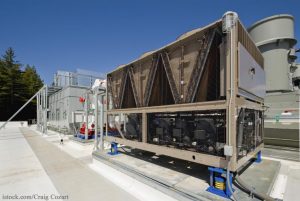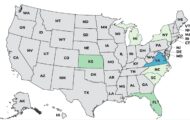The Illinois Department of Public Health reports today that there are 53 people sickened in the Legionnaires’ Disease outbreak at the Illinois Veterans’ Home in Quincy. Nine people have died.
 Legionnaires’ Disease is a severe type of pneumonia caused by the Legionella bacteria. This bacteria grows in warm water systems, especially in large buildings. Cooling towers, hot water tanks, whirlpool spas, evaporative condensers, showers, plumbing systems, and fountains are commonly contaminated with this bacteria.
Legionnaires’ Disease is a severe type of pneumonia caused by the Legionella bacteria. This bacteria grows in warm water systems, especially in large buildings. Cooling towers, hot water tanks, whirlpool spas, evaporative condensers, showers, plumbing systems, and fountains are commonly contaminated with this bacteria.
The bacteria leaves the building, plumbing, towers, or fountains in the form of mist. When it is inhaled into the lungs, it can cause the illness. Legionnaires’ Disease is not transmitted person-to-person, unlike ordinary pneumonia.
The incubation period of this disease is about two to fourteen days. the symptoms include a high fever of at least 102°F, chills, headache, and muscle pains. A serious cough, which may produce blood or mucus, follows within a short time period. Other symptoms can include shortness of breath, chest pain, and diarrhea.
The people who are most susceptible to this illness include anyone over the age of 50, current and former smokers, people with suppressed immune systems or chronic illnesses, and anyone with chronic lung disease. Up to 30% of those who contract Legionnaires’ Disease die. Antibiotics can treat most cases, but the earlier the patient is treated, the better the outcome.
When an outbreak of Legionnaires’ Disease is confirmed, water sources in buildings in the outbreak area are tested for the bacteria. Normally, these tests are not conducted because they are expensive. Any area contaminated with the bacteria is then cleaned and disinfected.
The Centers for Disease Control releases a weekly report on death and disease called the Morbidity and Mortality Weekly Report (MMWR). The September 4, 2015 issue says that there were 404 cases of Legionnaires’ Disease, and a related illness called Pontiac Fever, in the four weeks ending August 29, 2015. That is more than twice as many cases as expected for the same time period in the past five years. Legionnaires’ Disease cases spike in the late summer and early autumn.
As the awareness of this illness is raised, more doctors are calling for Legionnaires’ tests for their patients, when they would have been satisfied with a pneumonia diagnosis in the past. The test for Legionnaires’ is not normally conducted when a person presents for pneumonia-like symptoms.
Two other Legionnaires’ Disease outbreaks have occurred this summer: one in the South Bronx that killed 12 people, and one at San Quentin State Prison in California that has sickened 85 people. The outbreak in the South Bronx has been solved: the Opera House Hotel cooling towers were the source of the bacteria. The outbreak at the prison in California is still under investigation.
If you know of someone, or you yourself, have had these symptoms, see a doctor and ask for a Legionnaires’ Disease test. People living in the South Bronx, in Quincy, Illinois, and near the San Quentin prison should be especially vigilant. There have been more Legionnaires’ Disease illnesses in western Illinois that are not linked to the Veterans’ Home.




